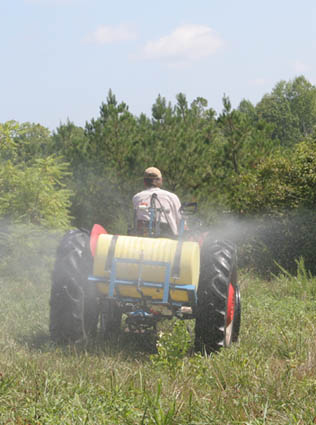 Step 1: Mow Them Down
Step 1: Mow Them Down
Mowing not only stimulates new growth, which can result in thicker stands of clover, but it will remove the tops of weeds, preventing most of them from forming seed heads.
Once mowing has occurred, treat the plot with some type of herbicide:
These include non-selective herbicides, such as Round Up, which kill all plant growth; herbicides that kill only grasses; and those that work on broadleaf plants. Grass-specific herbicides kill a variety of grasses such as fescue, wiregrass and Johnson grass, but they also kill beneficial grasses such as wheat and rye. Broadleaf herbicides, on the other hand, kill just about everything except grasses, while some, including Whitetail Institute’s Slay, kill a variety of broadleafs except clover and alfalfa. The best advice, of course, is to read the product’s label before you use it to make sure you’re employing the right tool for the job.
Step 2: Followup Control
Since some plants don’t start growing until mid- or even late spring, you’ll likely be faced with another rash of weed growth after that first herbicide application. Although some herbicides are residual, meaning they remain in the soil and work on plants that haven’t even started to grow yet, others, such as grass-specific herbicides, aren’t. You’ll need to reapply them a couple of times a year as new grasses sprout.
“Residual herbicides can build up in the soil, so as you continue to use them, you’ll actually have to spray less in the long-run,” says Mark Trudeau of the Whitetail Institute. “Because they build up, it’s very important to follow application guidelines.”
The best time to use any herbicide is in the spring, right after unwanted plants start growing again. That’s usually when daytime temperatures average around 60 degrees
WARNING: Trudeau also advises that it’s a bad idea to mow in the summer. Just as spraying herbicides can stress clover and other food-plot plants, cutting them during the extreme heat of July and August can also shock the plants.






